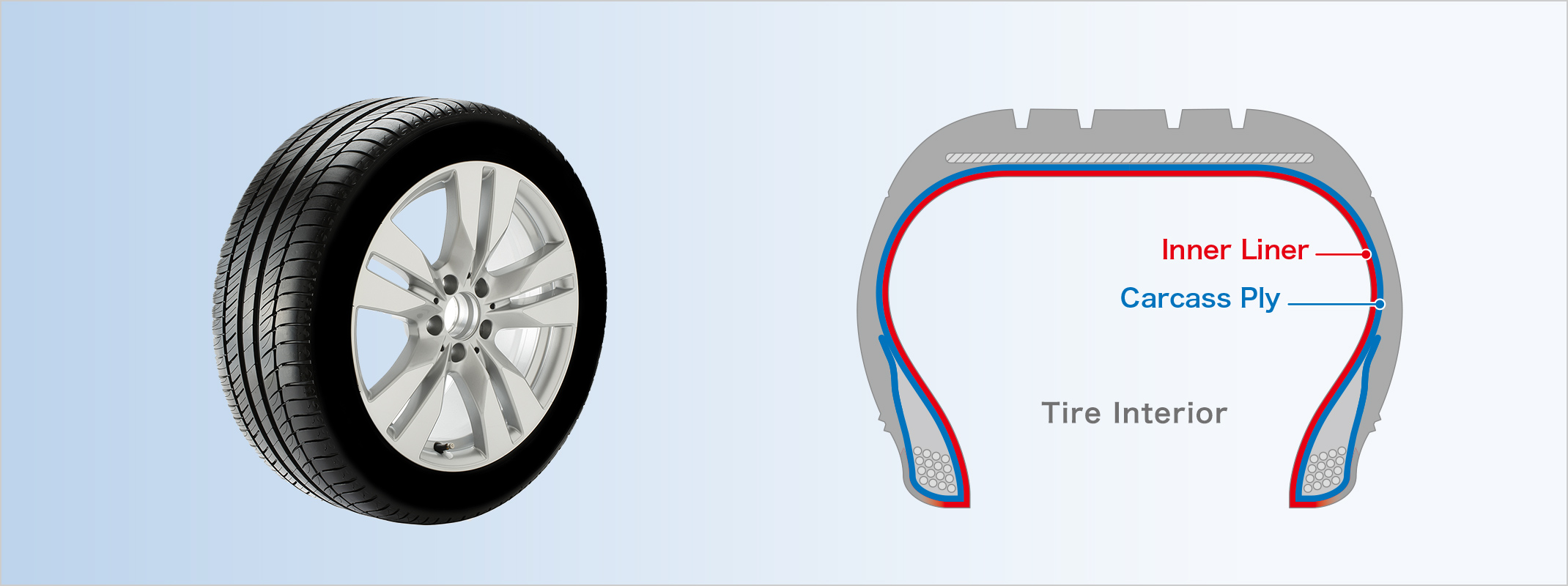Reducing Fluidity of Tire Rubber

Crosslinking with Electron Beams (EB) before Vulcanization Reduces Material and Achieves High Quality
After assembling various sheets of rubber and other component materials, tires are molded using a process known as vulcanization, adding heat and pressure to form the tire. Before vulcanization, the rubber is soft and extremely easily deformed, causing issues with workability and materials shifting out of position, resulting in defects.
To solve these issues, electron beam processing is used on carcass plies and inner liners.
For example, carcass plies contain cords that give the tire strength. When this layer is thin, the cords can shift, resulting in defects when they perforate neighboring sheet layers, so it was common to solve this by making the rubber sheet thicker.
By using electron beams to pre-crosslink with the rubber sheet before the vulcanization process, rubber fluidity is limited, preventing materials from becoming misaligned. This makes it possible to use thinner rubber sheets, eliminating material costs, making the tire lighter, and contributing to higher quality.
Benefits of Electron Beams
| ● | Reduces Material Costs |
| ● | Lightens Weight Tires |
| ● | Higher Quality (Improved processing characteristics) |